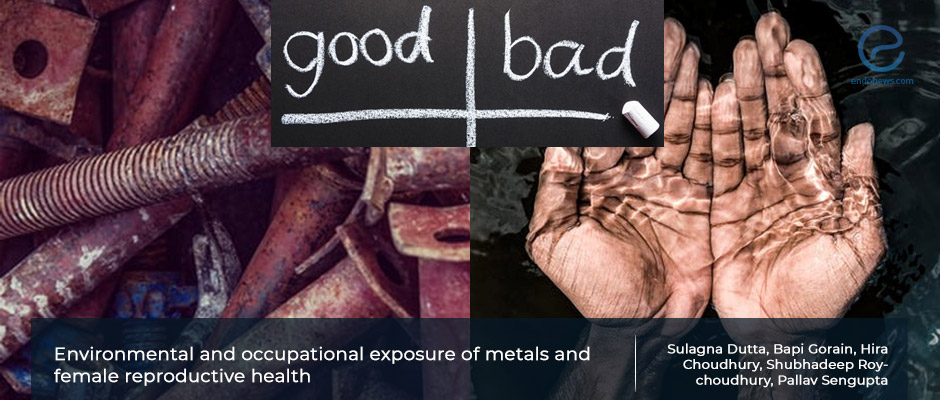Envorinmental metals harmful for female reproductivity
Feb 16, 2022
Chronic exposures to heavy metals can cause reproductive tissue cancer , inflammation, menstrual disorders and infertility.
Key Points
Importance:
- Chemical exposures during embryogenesis may disrupt hormone communications causing polycystic ovaries (PCO), premature ovarian failure (POF), reduced cyclicity, and lower fertility rates.
Highlights:
- Environmental and occupational heavy metals are one of the major causes of infertility, spontaneous abortions, stillbirths, and preterm deliveries due to their effect on the reproductive system.
What's done here:
- The effects of heavy metals on female reproductive health are summarized by a review of research in the relevant literature.
- Dutta et al. from Mahsa University, Malaysia listed the harmful effects and/or benefits of the most known heavy metals.
Main items to consider:
- Some of the hazardous metals like boron, chromium, copper, cobalt, iron, manganese, vanadium, zinc are essential for the human body, but they create an undesirable effect when their intake is imbalanced.
- Research indicated that environmental metals and other endocrine-disrupting chemicals play a role in female reproductive development.
- Synthetic estrogens, environmental and occupational metals are endocrine-disrupting chemicals that have harmful effects at every stage of pregnancy.
- Women whose mothers were exposed to endocrine-disrupting chemicals have reported cycle abnormalities and uterine fibroids.
- Chronic exposure to heavy metals may lead to breast cancer, endometrial cancer, endometriosis, menstrual disorders, spontaneous abortions, stillbirths, preterm deliveries, and ovarian failure.
- Certain chemically induced gene regulatory alterations are linked to complicated human illnesses like cancer, obesity, diabetes, respiratory diseases, allergies, Parkinson's disease, and Alzheimer's disease.
- Excessive intake of arsenic, cadmium, chromium, cobalt, and nickel cause oxidative damage to intracellular organelles, lipid membrane, DNA by activating reactive oxygen species similar to the lead, known to be dangerous.
Lay Summary
Heavy metals exposure in a wide range of ways is one of the main causes of increased infertility. According to the 2003 National Health Survey, nearly every pregnant woman in the USA is exposed to at least 43 hazardous chemicals during their pregnancy period. Hazardous environmental chemicals affect women throughout preconception and prenatal periods and create adverse effects on reproductive health.
To draw attention to the increasing danger, Dutta et al. from Mahsa University, Malaysia penned an overview about underlining damaging mechanisms of environmental and occupational heavy metals that affect the female reproductive system. This recently published paper appeared in the Journal of Environmental Science and Pollution Research updated the knowledge with examples from the actual literature.
To understand the toxic effects of heavy metals in the cell, it is worth knowing that the heavy metals escalate reactive oxygen species generation and induction of oxidative stress by mimicking endogenous anions as calcium or vital metals. This may lead to oxidative damage to cellular macromolecules and cell death. Heavy metals also mediate epigenetic changes in the reproductive cells which alter the expression of vital cellular proteins and disrupt steroidogenesis. Cell cycle disruptions are the cause of carcinogenesis.
These complicated pathways of toxicity at the cellular level and gene alterations result in several sorts of female developmental alterations with probable future failures of female reproductivity.
Research Source: https://pubmed.ncbi.nlm.nih.gov/34558053/
Heavy metals envorinmental contaminants endocrin disrupting chemicals polycystic ovaries premature ovarian failure oxidative stress pregnancy female infertility.

